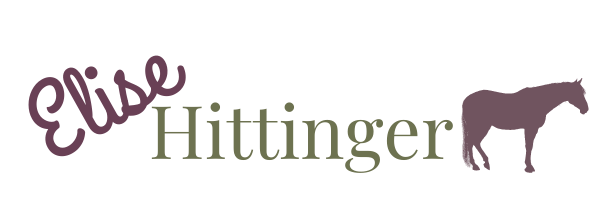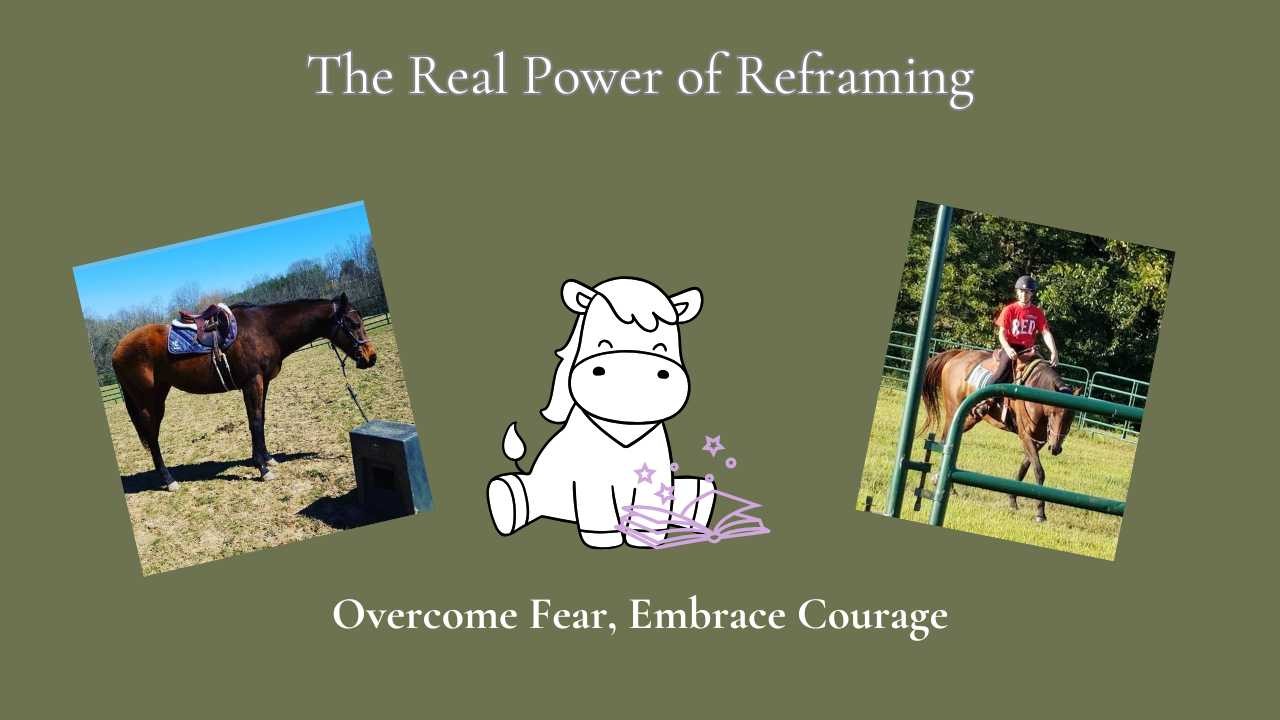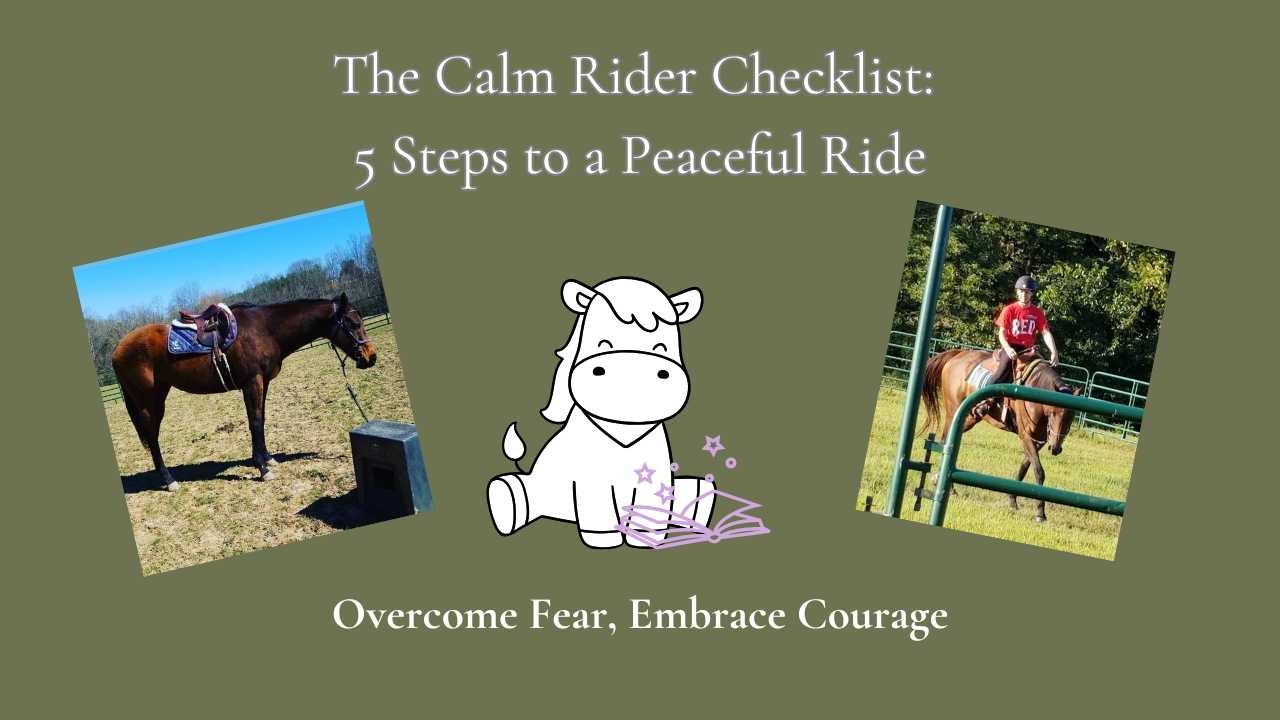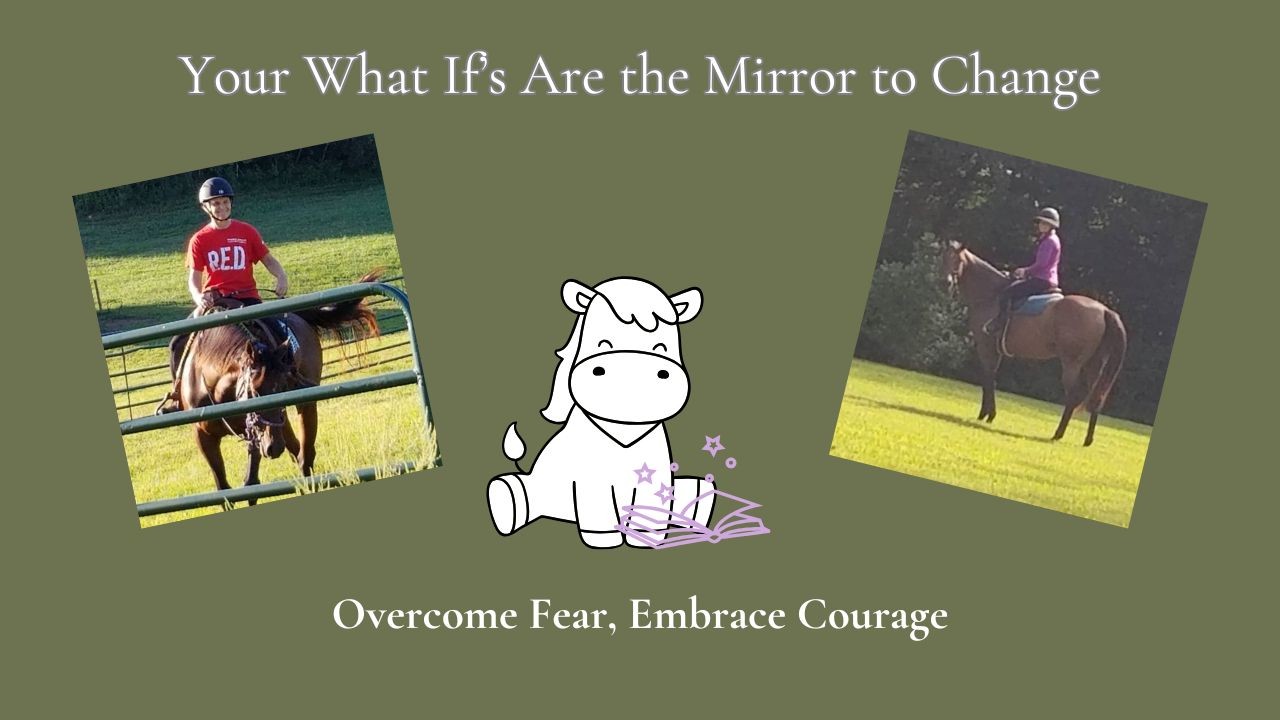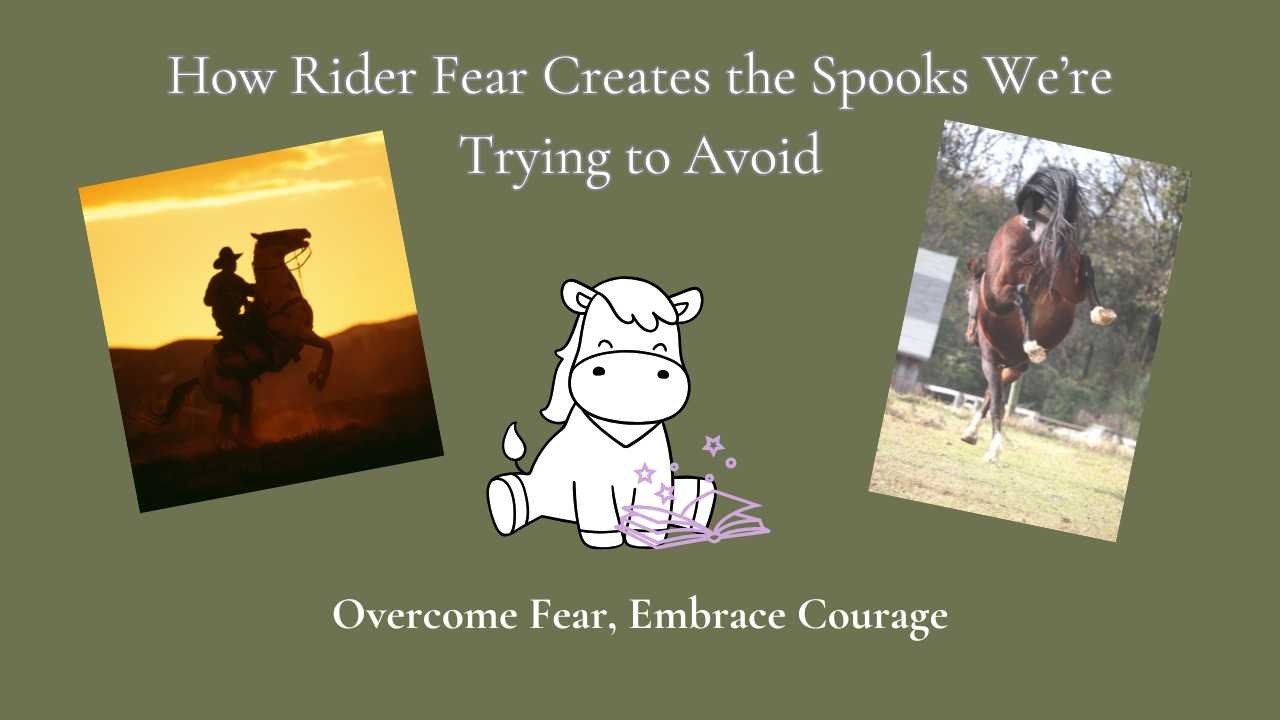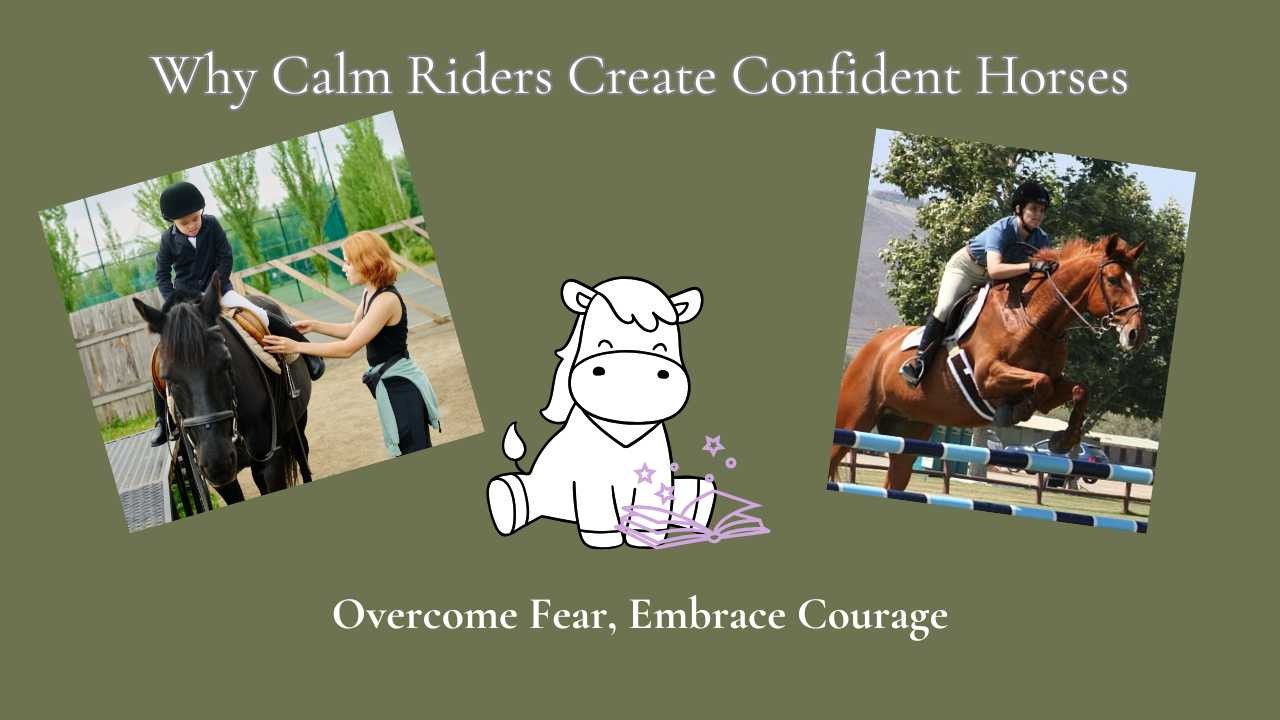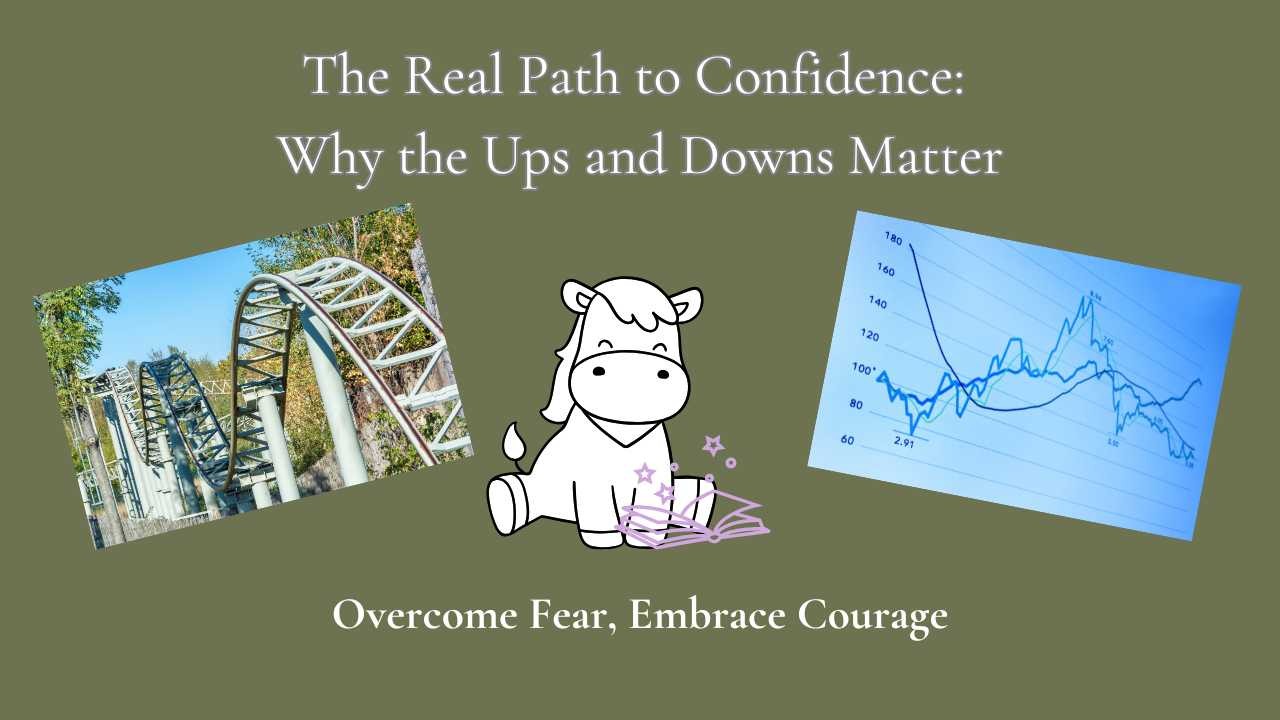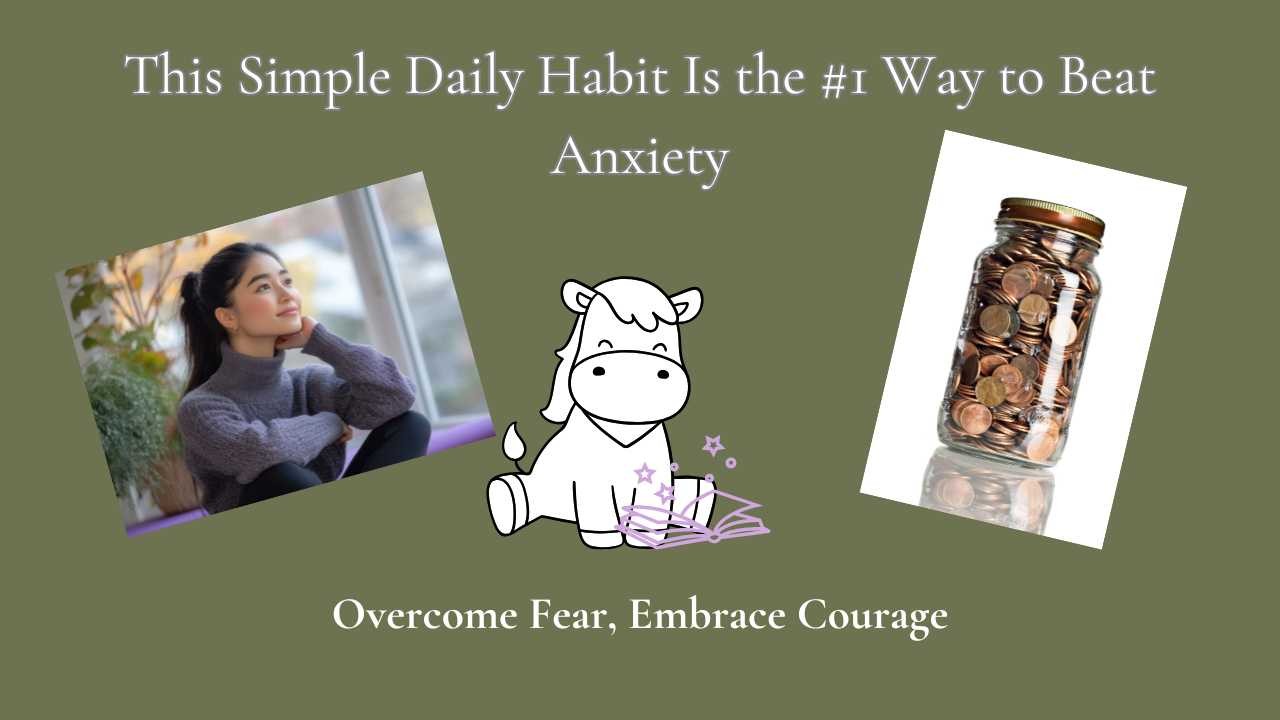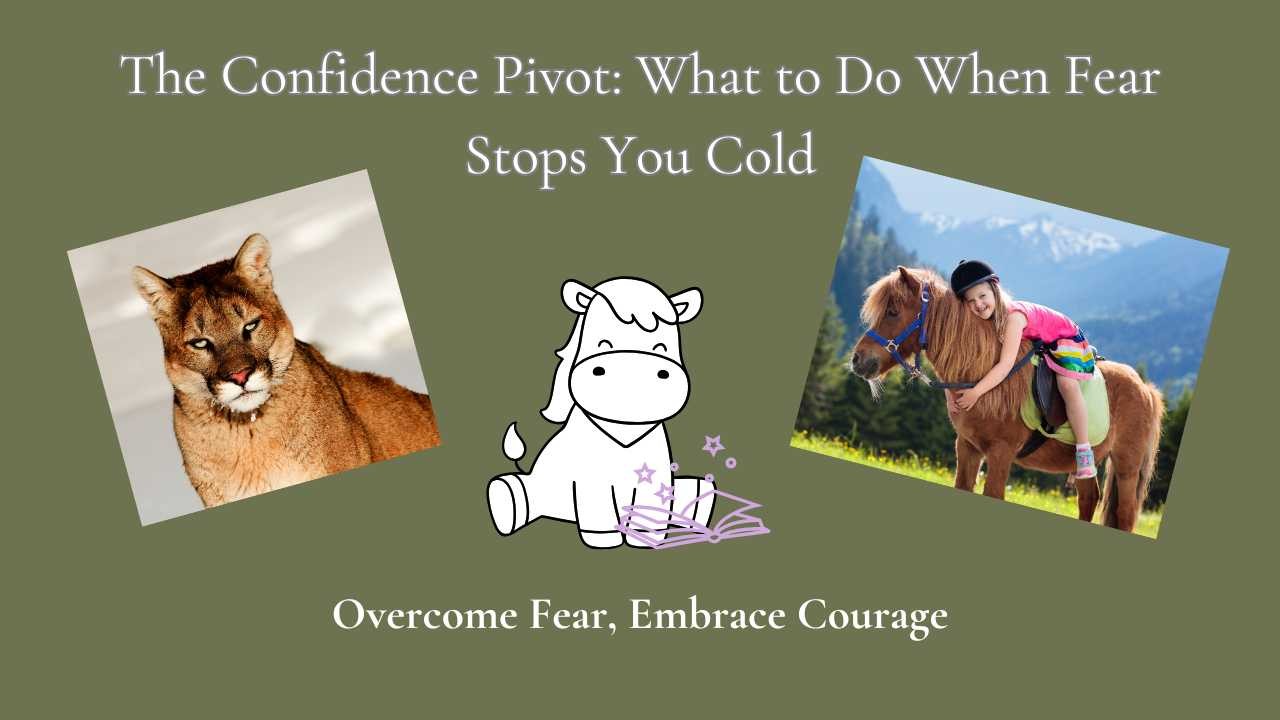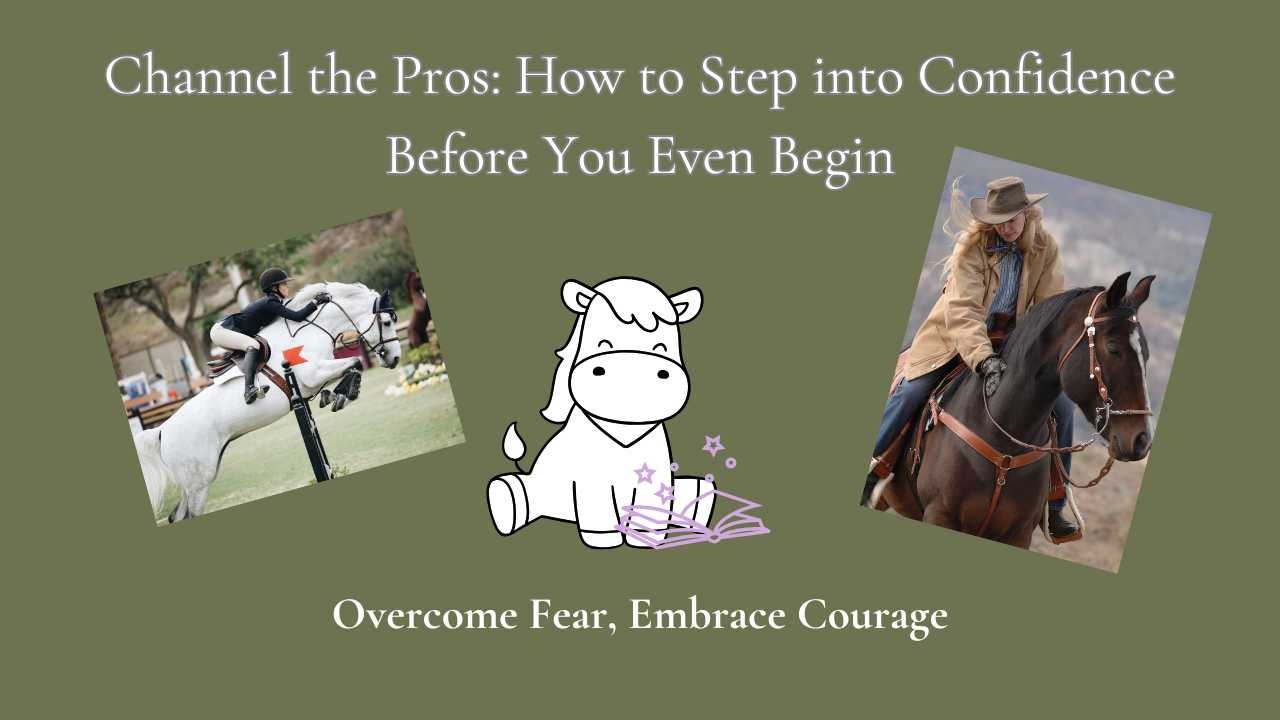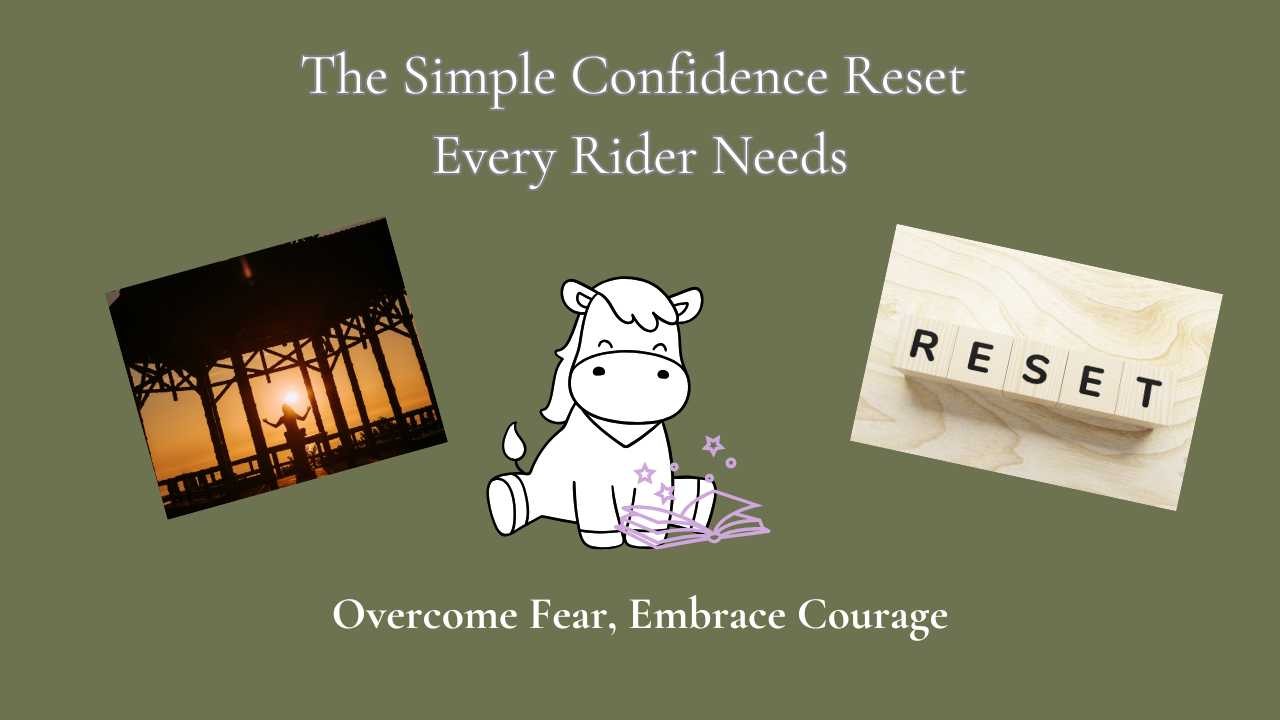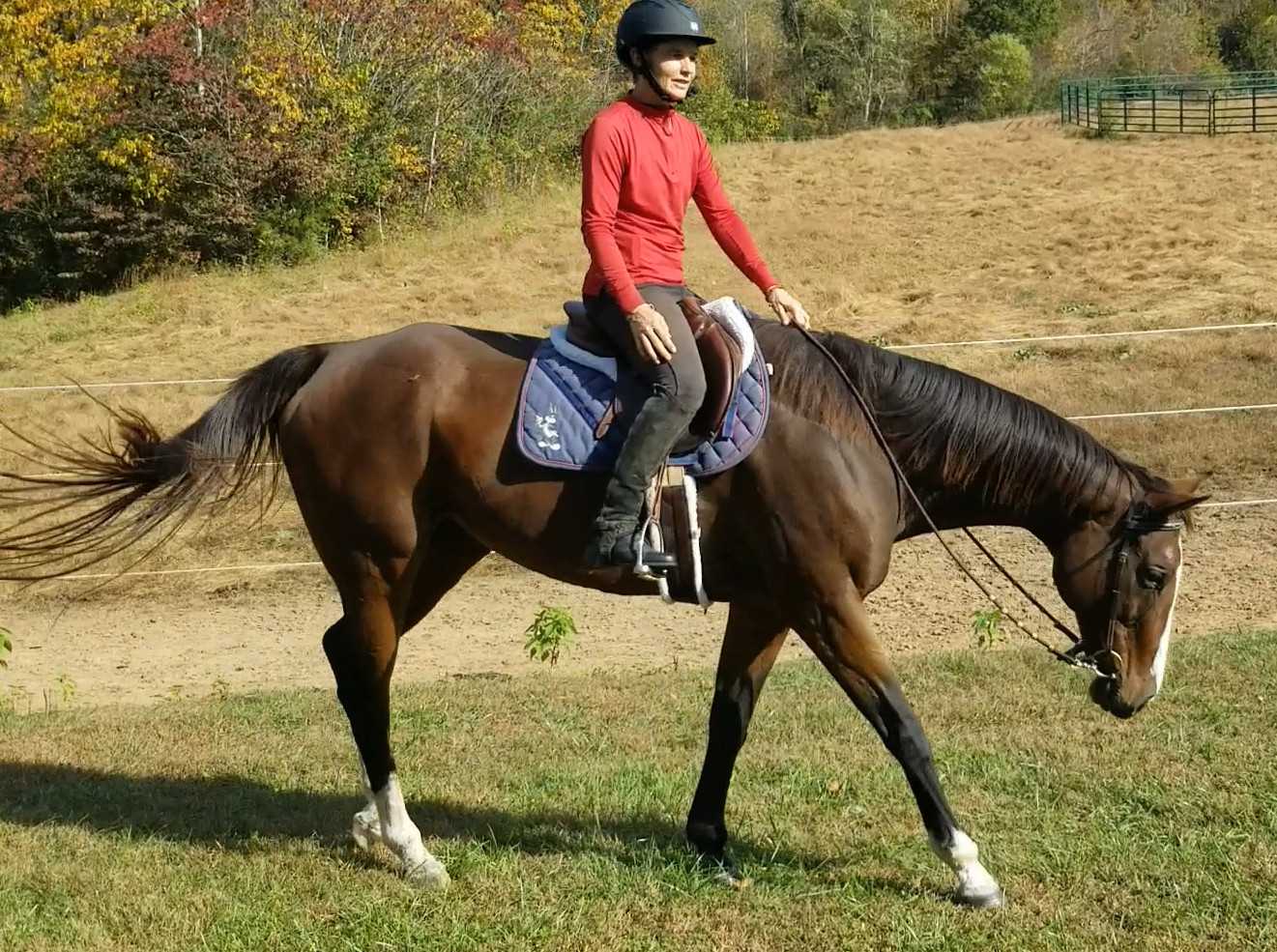
Sitting in the warmup ring on my cute gray thoroughbred mare, tears streaming down my face, realizing that once again, I did not have the confidence to ride her through her attitude. I got off and handed her to the teenager to get on and work her through her attitude. What did this young lady have that I didn't have? Confidence. She was half my age, had far less riding experience than I did and yet, here I was, sitting on the sidelines while she "fixed" my horse. We all have those moments when our anxiety and fear get the best of us.
How can we build up our confidence so that we are not the ones sitting on the sidelines?
First, soak up moments of courage outside of riding. The more confidence and courage you have in anything, the more you have in riding. Look for little areas in life where you did something you didn't "FEEL" like doing. You took the courage to do it. For me, going to the dentist is huge. I have built up so much confidence, I now sleep at the dentist. Are there areas in your life outside of riding that you need a bit of courage. Weight loss? Getting healthy? Going to the dentist? Soak up the courage pennies when you have those moments.
Second, while riding, practice getting a little anxious and then coming back to calm. For me, the trigger is the horse lifting their head. I can focus on feeling that anxiety when my horse lifts their head and then feel that go through me and out my fingers and toes. Filling myself back up with calm. As I come back to calm, it feels rewarding and the more I do it, the easier it becomes.
Third, focus on where you are going and what you are doing. Keep the focus on the ride. Shush the what if and monkey chatter and come back to focus. We all have that background talk that can escalate our anxiety, but we also have the ability to move past that and focus in the moment.
Building confidence is a process, but it starts with one small step. Whether you're struggling with riding, facing a personal fear, or just trying to boost your everyday courage, every "courage penny" you earn counts. To help you start building your confidence, download my free eBook, The Ultimate Guide to Courage Pennies. Inside, you’ll find practical steps to help you face fear and build a more confident, courageous mindset—both in and out of the saddle.
Start today. You’ve got this.
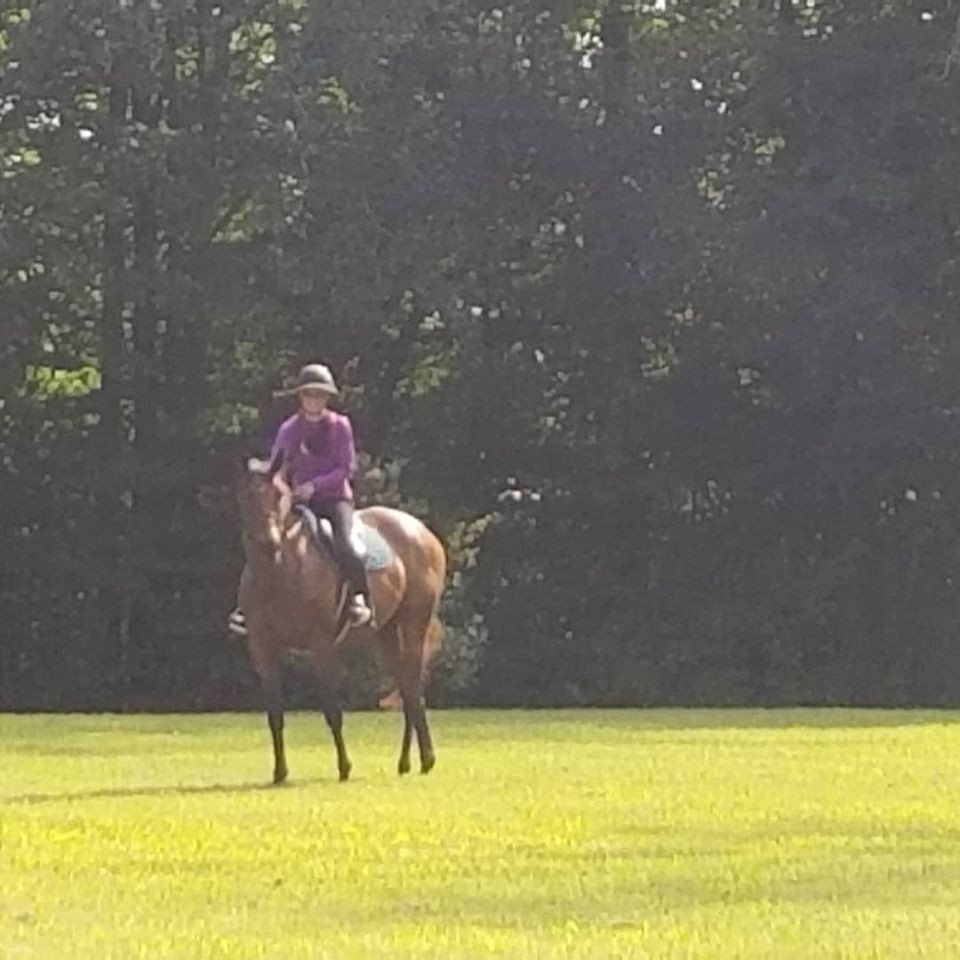
That beautiful evening trail ride, which ended just 60 seconds after I mounted the horse when he flipped on me, changed who I was inside my head. Before the accident, I loved riding on the trails. The freedom and the flow with the horse through beautiful country felt it would last forever. But after those 60 seconds, everything changed.
I started questioning myself: Why had that moment affected me so much? As I looked deeper into it, I began to examine my self-talk, and it was like a light went on. So many times, the dialogue in our heads is far harsher than anything we would ever say out loud to others. And mine? It was filled with thoughts like, “I'm not good enough to ride.” “What if I get hurt?” and “Maybe I’m not cut out for this.” I was talking myself out of enjoying the very thing that once brought me peace and joy.
These negative thoughts are the dreams killers—the things we tell ourselves that slowly fade our passions and hold us back.
Here are a few things you can do to change your self-talk:
1. Know What You Are Saying
First, recognize what you're telling yourself. Write it down and take time to reflect on the soundtrack that loops in your mind. Just getting it out on paper is a powerful first step. Acknowledging the negative self-talk is key to changing it. Remember, there’s hope for transformation once you become aware of it.
2. Reframe the Self-Talk
After identifying the negative thoughts, work on reframing the words. Write a new script for yourself and practice saying it out loud. For example, instead of thinking, “What if I get hurt?” try “I am confident and capable. I trust my skills and my horse.” Shifting the narrative in your mind will change the way you show up in the world.
3. Practice, Practice, Practice
Think back to school days when we had to write things over and over—“I will not talk in class”—well, the same principle applies. Once you’ve reframed your self-talk, practice it consistently. Write it down repeatedly, say it aloud in front of a mirror, or even speak it to your horse. Over time, these positive script and reframe, will become your new internal dialogue.
Whatever you do, remember this: Change is possible. And it is incredibly rewarding to feel empowered and positive again. By shifting how we talk to ourselves, we unlock the potential to live our dreams with confidence.
Need help making lasting changes in your life? I have other exercises like this in my Courage Coaching. Click here to find out if it's a good fit for you!
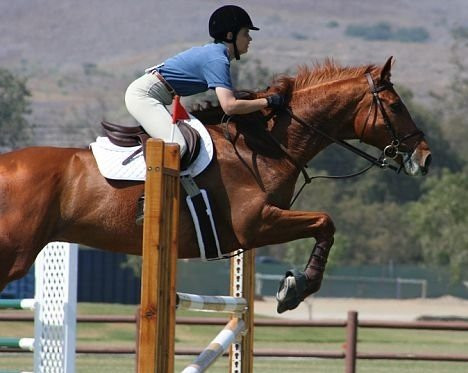
As I walked the course for my first time at 1.2M jumpers, I could feel the excitement but also the anxiety building fast. These jumps looked bigger than me. Was I ready? Could I do this? I was actually terrified. I felt okay warming up, and Atticus was jumping great. But as soon as I walked into the arena, the tension hit me hard. I felt tighter than a garage door spring.
I can't believe we made it over all the fences, but it wasn’t pretty. My horse jumped his heart out for me, and looking back, I was YELLING at him. I was so tense; I was holding the reins with a death grip. My legs were locked tight on his side. I was yelling through my own anxiety, giving off all the wrong signals. Reflecting on that ride, I learned a lot about myself, and most importantly, I learned that communication with horses doesn’t need to be loud. It can be done in a whisper.
Here are three tips to start connecting with your horse in a whisper:
1. Breathe: The most important thing to do when anxiety hits is to focus on your breath. Take deep, steady breaths to calm your body and mind. Horses are incredibly sensitive to their rider's emotions, so if you're calm, they will be too. By letting go of your anxiety in your exhale, you can whisper confidence to your horse.
2. Soft Hands: Instead of gripping the reins, focus on maintaining a soft contact with your horse. A gentle hand will allow you to guide them without tension. Remember, a quiet hand speaks volumes.
3. Relax Your Body: Your horse feels every movement. By relaxing your legs, your seat, and your arms, you’re sending the message that you trust your horse. A relaxed body means a relaxed ride and whispering communication.
I learned the hard way that holding on tight only makes things worse. But with patience, breathing, and a calm connection, you and your horse can move through anything—quietly, confidently, and with trust.
If you would like a little help turning down your anxiety, let's have a quick chat and see if I can help you out! CHAT NOW!
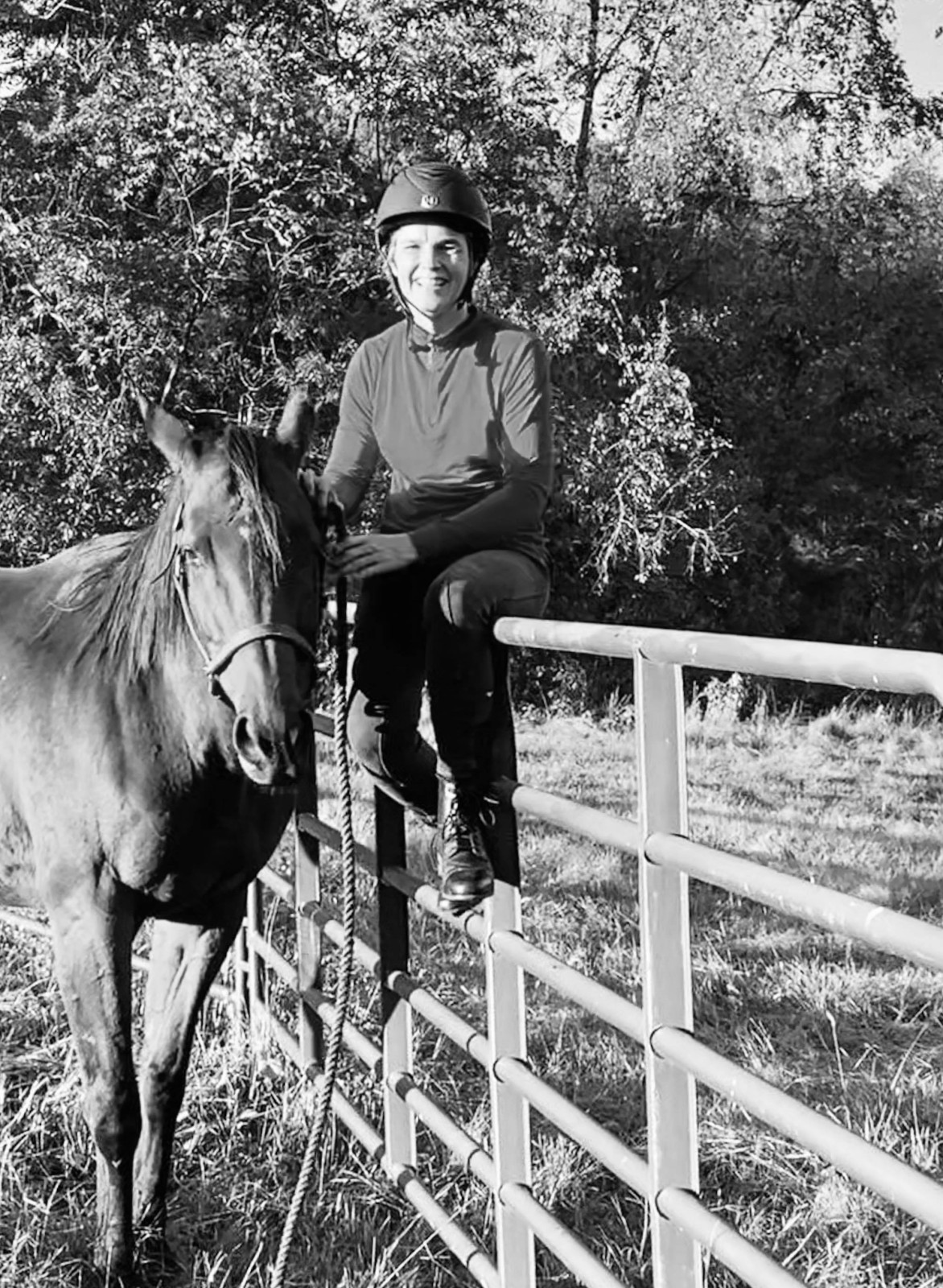
We were heading to a show, and one of the grooms went to load my horse into the trailer. I was busy getting all my tack together and not paying much attention. Then I heard a ruckus and looked up to see my horse heading back to his stall at a high rate of speed, dragging a lead rope.
I ran over and saw the groom getting up after being knocked down—thankfully, he was okay. The groom said, “I knew he was going to do that,” and this shocked me. I had never had an issue loading my horse before. He explained that the last three times, my horse had run him over when trying to load him, and he had expected it to happen again.
Was my horse reflecting the thoughts of the groom?
I’ll never know for sure, but what I do know is that when I went to load my horse myself, he walked right in with no issues at all.
Here are 3 fun ways to play with this:
1. Find some things to be really curious about around your horses.
- For example, find a flower and really get curious about all the nuances in its color. Look at how the petals are attached. Notice if they’re soft or stiff. Get really excited and engaged in this curiosity. Then, see if your horse wants to participate, mirroring your own curiosity. You might be surprised at how your horse picks up on your energy!
2. Play with your emotions around your horses.
- Tap into different emotions—laughter, love, even sadness—and notice how your horse responds to these emotional shifts. (Though, I’d recommend leaving out anger for safety reasons!) Playing with emotions allows you to see how your horse reacts to your energy, and it can lead to deeper connections with your horse.
3. Play with your intentions.
- Before spending time with your horse, set an intention for how you want things to go. Maybe you want a smooth and relaxed ride, or perhaps you want to improve your bond. See if you can guide your time together with this intention, allowing your horse to play an active role in shaping the experience. This is one of my favorite ways to interact with my horse—it feels like the horse has a voice and gets to help guide the moment.
Final thoughts:
Horses are incredibly sensitive to our thoughts, energy, and intentions. By playing with these different aspects, we can create stronger connections and more successful outcomes. The next time you're with your horse, have fun exploring how your curiosity, emotions, and intentions shape the experience—and let your horse guide you!
If you have enjoyed this, I have a guide for some more playing with your horses. 5 Energy Games!
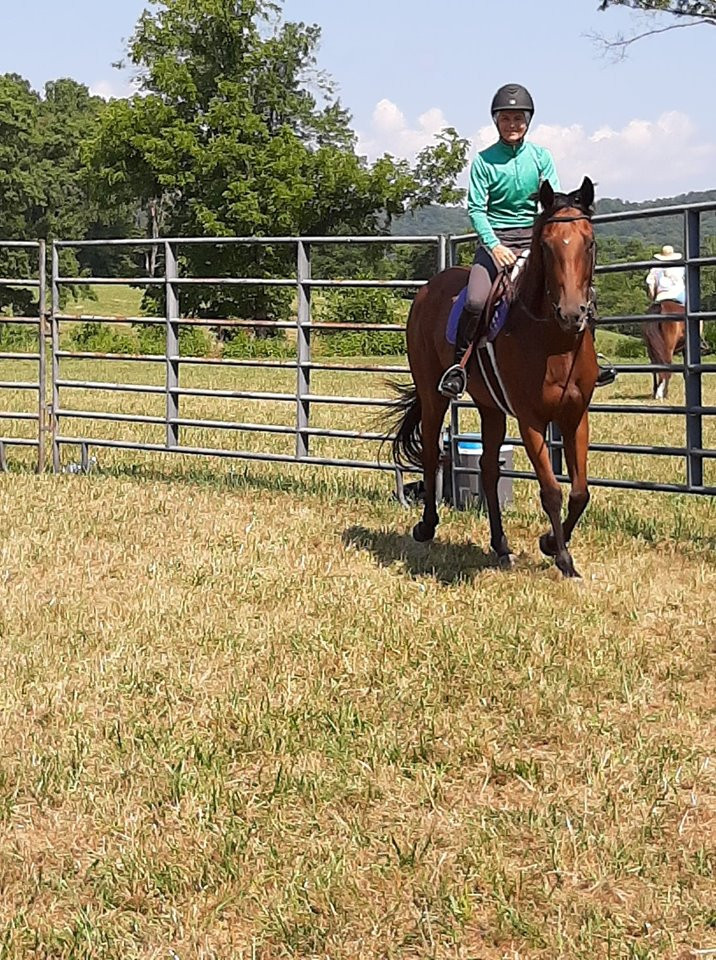
Stepping into the show ring, knowing I had a chance at winning the class, I immediately felt myself tense up, like a stiff board riding my horse—and he let me know it, too, as he stiffened in response. The fluid rhythm we shared in the warm-up ring quickly evaporated into the dirt.
There’s so much that happens in our brain that influences the success of our rides—or the lack of success—but almost always, it traces back to our thoughts and decisions.
As riders, we can become better brain riders!
1. Active Focus vs. Relaxed State
- Active Focus: In certain moments, we must be fully engaged mentally, making split-second decisions. responding to our horse’s movements or navigating obstacles. This requires active focus, consciously putting attention to specific cues and actions.
- Relaxed State: However, the magic often happens when we are just completely relaxed in the moment, where we are no longer consciously thinking about each movement but instead allow ourselves to follow the rhythm. This deep connection with the horse and the environment often leads to the most fluid, harmonious rides.
2. Trusting Muscle Memory
- Muscle Memory: For most of us, many aspects of riding become automatic, such as maintaining posture or applying leg aids. Thinking less can be beneficial because muscle memory takes over, allowing us to just enjoy the experience.
- Overthinking: On the other hand, overthinking can disrupt the flow and create tension. We start focusing too much on the little details of the ride, creating unnecessary tension in us and the horse.
3. Balancing Awareness with Relaxation
- Mental Awareness: While riding, maintaining mental awareness of our body, the horse, and the surroundings is crucial. This includes staying alert to potential hazards or adjusting for terrain changes. I love playing games while doing this!
- Relaxation: Staying relaxed is just as important. Overthinking every stride or trying to control every aspect, causes unnecessary tension, both in your body and the horse. Relaxation helps maintain a natural, smooth connection.
Our brain plays a pivotal role in our success or struggle in the saddle. By becoming aware of how our thoughts and mental states affect our rides, we can harness the power of focus, relaxation, and muscle memory to improve our performance and deepen our connection with our horses.
If you would like help fixing up your brain, let's have a chat and see if I can help! Schedule a chat with me!
